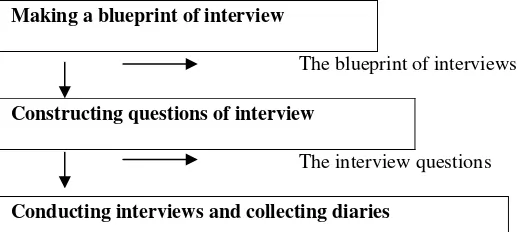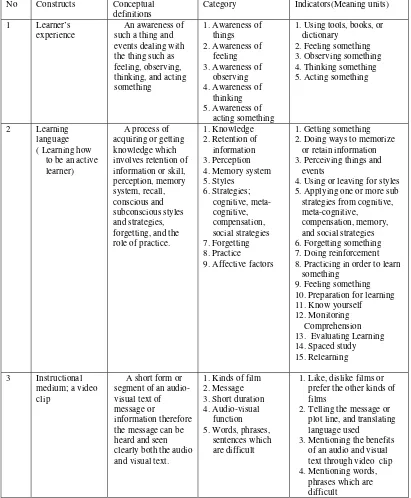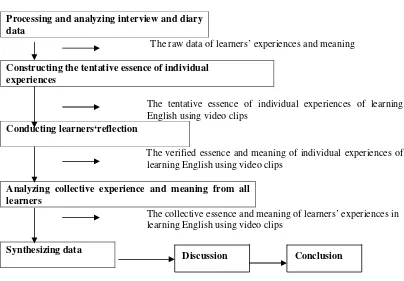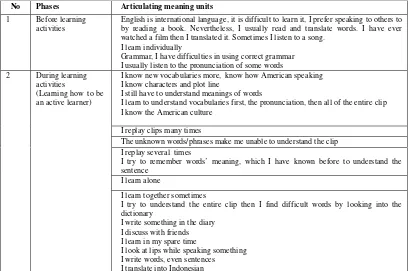LEARNERS’ EXPERIENCES IN LEARNING ENGLISH USING
VIDEO CLIPS
THESIS
Presented in Partial Fulfillment of the Requirements
for the Degree of Magister Humaniora (M.Hum)
in English Language Studies
by
Yuana Liverita Goodianti
056332038
Teks penuh
056332038
Gambar




Dokumen terkait
The first is to know the determinants of Josephine March’s masculinity based on the theory of traditional masculinity by Janet Saltzman Chavetz, and the second is to find out
tests were used to identify the participants’ comprehension in reading English text.. The tests were administered to the students
Marta : Ya..sudah pasti susah ya, karena otomatis khususnya buat saya yang bahasa inggrisnya ndak bagus gitu otomatis pada saat orang komplain kan tidak bisa kita ajak mencari
This study was conducted to analyze the types of code-switching in BOLA tabloid, SOCCER tabloid, and MOTOR Plus tabloid, as the samples of Indonesian sport tabloids, to identify
As discussed previously, parts of a sentence may be omitted by applying ellipsis structures. After the omission, the reduced sentence may only consist of adjectives,
The result of questionnaire showed that it is necessary to give the students instructions about scanning technique in reading and it is important to introduce
yang tidak common saya perlu berpikir atau buka kamus untuk cari tahu pengucapan yang benar…. Karena untuk verb yang common sudah terbiasa dan sudah yakin benar. Dan
PLA/GA-g-PLA5% bionanocomposite film Figure 7.6 Proposed degradation pathway of bionanocomposite film and its degraded products a PLA, b oligomer, c lactic acid, d acrylic acid, e